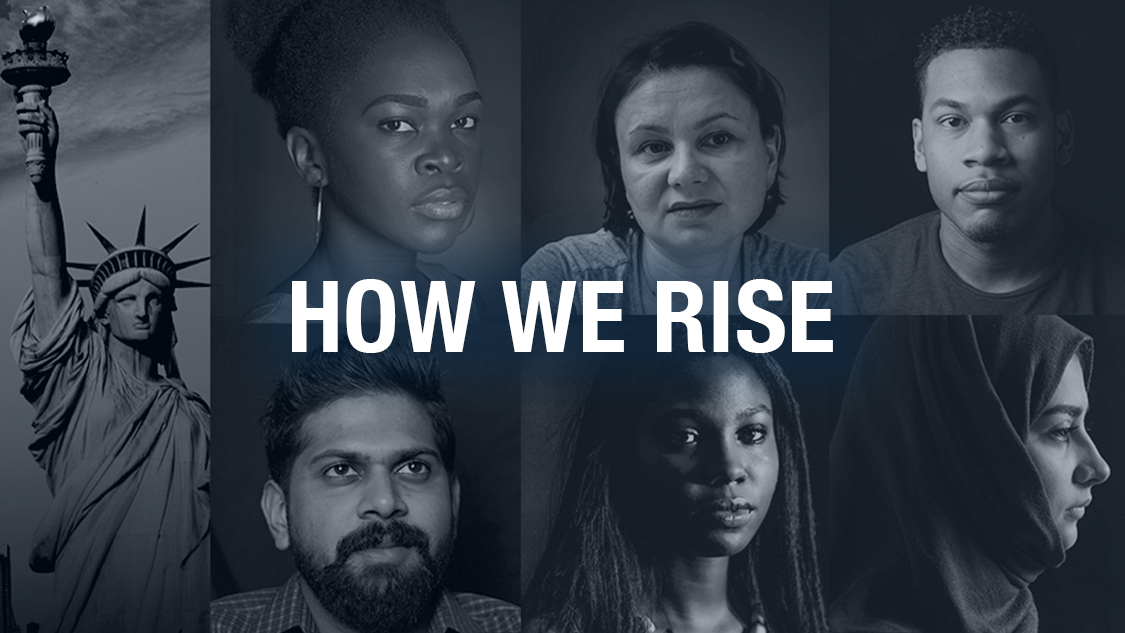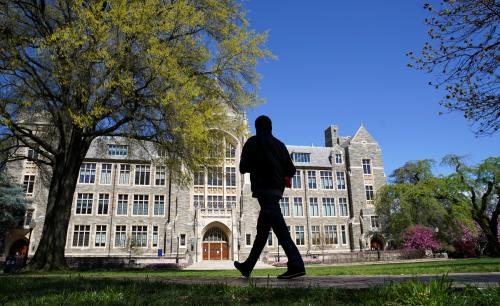With Senate and House resolutions to cancel up to $50,000 in federal student debt for borrowers, following a proposal from Sen. Warren (D-Mass.), and broad public support for cancellation, advocates are still pushing hard for cancellation to resolve the currently $1.75 trillion student debt crisis. But some persistent narratives have attempted to foil the promise of student loan cancellation. One strain of thought alleges cancellation would supposedly be “regressive,” that most student loans are held by rich people, and cancellation would most benefit those who need it least.
But this argument ignores who exactly is borrowing, and what constitutes undue burden of student debt. We argue that it’s not student loan cancellation that is regressive, but the student loan system itself. Focusing only on “successful” student borrowers—arguing that much debt is held by high earners, or that college graduates “tend to earn more” over a lifetime—only captures half of a system with divergent outcomes. By placing emphasis on student loans’ regressive design, we can understand how they disproportionately burden those least able to pay, while also bringing lower rewards.
With coauthor Raphaël Charron-Chénier, Brookings Fellow Louise Seamster has shown that Black households are more likely to hold student debt at most income levels. In another study, a team including Seamster found that the median student debt for Black borrowing households has increased nearly 100% in only six years. Within the burgeoning racial wealth gap literature, some research has shown debt can worsen racial inequality through disparate structures, terms, and/or returns to “Black debt” and “white debt.” Black and white borrowers tend to experience debt very differently—specifically because it is structured regressively. Not only do Black borrowers have to borrow more to offset racial differences in wealth, but they have to pursue even more education to get equivalent returns—a problem of increased “credentialization.” Prior research indicates Black borrowers’ greater difficulty with repayment comes from structural factors: lower salaries, lower returns to education, and lower likelihood of graduation. Our current system tells Black and Latinx borrowers to leverage debt to offset their own labor market discrimination—credentials for which they must pay more, both upfront and over time.
These factors produce a racial debt gap that expands over decades, affecting the life course in ways experienced much less often by non-Latinx whites (see, for example, the crucial research of Fenaba Addo and Jason Houle). Twenty years into repayment, the median Black borrower still owed 95% of the original amount they’d borrowed, while the median white borrower had almost fully repaid their loan. While this shocking statistic illustrates how student debt can widen racial inequality, we take it as a measure of student debt’s regressiveness.
Many borrowers in financial distress are likely to end up paying more than better-off borrowers over the lifetime of their loan, not less. Student loans “cost” less to borrowers who are able to repay them faster, through family resources, higher incomes, and private refinancing. Collectively, better-off borrowers can move through this system as it was originally intended. But worse-off borrowers remain trapped in it for decades. In 2009, around 18% of borrowers had been in repayment for over seven years. Ten years later, that was true for half of borrowers. A 2021 data request by Sen. Warren revealed that 4.4 million borrowers have been in repayment for over two decades. This finding also overlaps with the growing number of borrowers over 60, the age group experiencing the largest increase in student loan debt over the last decade.
How have so many people wound up as life-long student borrowers? Millions of borrowers are in too much financial distress to pay their debt at all. But many more borrowers making regular payments struggle to make a dent in their loan balance. We don’t know how many, because we lack information on cash flows on student loans. Without that, it’s hard to calculate how many people have static or rising balances despite regular payments.
But many borrowers are caught in what Mark Huelsman of the Higher Education Policy Project aptly describes as a “debt trap.” Basically, once borrowers experience rising balances through unpaid interest (“negative amortization”), it is difficult to make it out of their initial position. For example, the Washington Post recently asked its readers what “they would change” about their student loan debt. Almost all contributors mentioned student loan interest as part of their payment struggles. These testimonies illustrate a growing body of evidence of the regressive role of interest. For instance, research by Looney and Yannelis found that by 2012, 57% of borrowers two years into repayment owed more than when they’d begun (as compared to only 9% of borrowers in 1986). And there’s evidence that growing balances are racialized as well. Recent research found that by 2018, 62% of borrowers under 35 in majority-minority neighborhoods had increasing balances. Borrowers with growing balances are often stigmatized for not making “progress” in paying down the debt balance, a narrative stressing “individual responsibility” in spite of systemic regressivity.
Many student loan “reforms” to date have extended the system’s regressivity by extending the loan repayment period. Various income-derived repayment (IDR) programs, which lower payments and extend the repayment period, have offered the promise of eventual loan forgiveness. However, early indicators of the extremely low (statistically zero) number of loans forgiven through IDR, and high attrition at the beginning of the program, raise doubt that IDR forgiveness will ever take place for most, absent major changes. And yet a 100% persistence and forgiveness rate for IDR enrollees is assumed in models calculating the supposedly more “progressive” aspects of twenty-plus years in IDR, relative to immediate cancellation. The success of the pandemic-era Paycheck Protection Program has shown the federal government can execute loan programs that deliver forgiveness when it wants to. For student debt, only its regressive components seem to be playing out as promised—the components that extend the loan term and increase total interest.
Finally, student loans are much harder to leave behind than other forms of debt. Changes to bankruptcy rules (initiated by then-senator Joe Biden) made student debt nearly impossible to discharge, with punitive, debilitating effects. At present, a quarter of borrowers overall, and half of Black borrowers, default on their student loans within 12 years. But defaulting on student loans does not mean loan forgiveness—it continues the debt obligation, on harsher terms. And even absent voluntary repayment, the government can still extract its due: taken off taxes and social benefits, garnished from wages, through civil suits.
Undoubtedly, student loan cancellation is a matter of racial and economic justice. But when people in positions of privilege, whether Matthew Yglesias or Larry Summers, focus only on wealthy borrowers, they further erase how our regressive student loan system has disproportionately burdened Black, Latinx, and low-income borrowers.
The Biden administration’s incrementalist reforms to date have not seriously addressed the system’s regressivity. In contrast, debt cancellation can potentially start a cascade of good changes and spur movements reshaping higher education financing. Most importantly, it can help dismantle the increasingly regressive and racialized structure of the student loan system.
The Brookings Institution is committed to quality, independence, and impact.
We are supported by a diverse array of funders. In line with our values and policies, each Brookings publication represents the sole views of its author(s).









Commentary
A regressive student loan system results in costly racial disparities
January 24, 2022